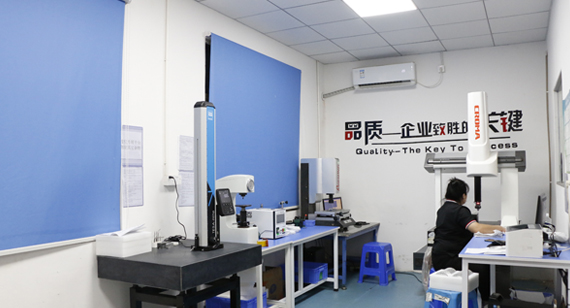15 years one-stop China custom CNC machining parts factory

Hey there I’m VMT Sam!
With 25 years of CNC machining experience we are committed to helping clients overcome 10000 complex part-processing challenges all to contribute to a better life through intelligent manufacturing. Contact us now
 113 |
Published by VMT at Jan 20 2024
113 |
Published by VMT at Jan 20 2024
Introduction:
With the rapid development of the manufacturing industry, aluminum CNC machined parts, known for their high precision and quality, find extensive applications across various fields. However, quality inspection, as a crucial step in ensuring product quality, comes with certain costs and risks. This article delves into the costs and risks associated with quality inspection for aluminum CNC machined parts, aiming to assist businesses in better managing their production processes, mitigating risks, and enhancing economic efficiency.

I. Cost of Quality Inspection:
Equipment and Tool Costs:
To conduct accurate quality inspections, businesses need to invest in and set up advanced inspection equipment and tools.
These tools are relatively expensive and require regular maintenance and calibration to ensure accuracy.

Labor Costs:
Quality inspection demands skilled personnel for operation and management.
Businesses need to recruit and train individuals with the required skills and experience, incurring corresponding salaries and benefits.
Inspection Cycle and Production Costs:
Quality inspections often consume time and manpower, potentially leading to extended production cycles and increased production costs.
Businesses must balance inspection time to ensure product quality while optimizing the inspection process.
Standardization and Certification Costs:
To ensure the accuracy of quality inspections, businesses might need to adhere to industry and international standards.
Obtaining certifications like ISO 9001 involves additional costs for building a quality management system and certification.
II. Risks in Quality Inspection:
Technological Risks:
Evolving inspection technologies may pose risks if businesses fail to keep pace with industry trends.
Timely adoption of advanced inspection technologies helps avoid errors and ensures product quality.
Operational Errors:
The skill level and attitude of personnel during quality inspections significantly impact result accuracy.
Inadequate skills or negligence by operators can lead to inaccurate inspections and affect product quality.
Changes in Inspection Standards and Regulations:
Domestic and international quality inspection standards and regulations may change with market demands and technological advancements.
Businesses need to stay informed and adjust their quality inspection standards and methods to avoid non-compliance issues.
Supply Chain Risks:
The quality of raw materials directly influences the quality of aluminum CNC machined parts.
Issues with material suppliers or unstable supply can result in inconsistent part quality or failure to meet customer requirements.
Customer Complaints and Return Risks:
Ineffective quality inspection and control may lead to products not meeting customer requirements, risking customer complaints and returns.
This could result in economic and reputational losses, impacting the market competitiveness of the business.
III. Mitigation Strategies:
Continuous Technological Innovation:
Stay abreast of industry trends, regularly adopting advanced inspection technologies to enhance accuracy and efficiency.
Training and Assessment:
Conduct regular training and assessments for quality inspection personnel to improve their professional competence and work capabilities.
Standardization and Regulation:
Establish and refine quality inspection standards and operating procedures to ensure the standardization and regulation of the inspection process.
Enhanced Supply Chain Management:
Rigorously screen and assess suppliers, choosing those with good reputations and quality assurance for long-term collaboration.
Customer Feedback and Communication:
Establish an effective customer feedback mechanism to promptly understand customer needs and feedback.
Actively address customer complaints and product return issues, improving customer satisfaction and loyalty.
Preventive Maintenance and Calibration:
Regularly perform preventive maintenance and calibration of quality inspection equipment to ensure normal operation and effective use.
Risk Assessment and Management:
Identify, assess, and manage potential risks in the quality inspection process.
Develop corresponding risk response measures and emergency plans to reduce the impact of risks on the business.
IV. Conclusion:
The costs and risks associated with quality inspection for aluminum CNC machined parts are challenges that businesses must confront in the production process. To minimize the impact of these costs and risks, businesses should adopt measures such as continuous technological innovation, training and assessment, standardization and regulation, enhanced supply chain management, customer feedback and communication, preventive maintenance and calibration, and risk assessment and management. Through scientific quality management methods and effective quality control measures, businesses can elevate product quality, reduce costs and risks, enhance market competitiveness, and achieve sustainable development.
Ready To Start Your Next Project?
Get Instant Quote

Request a Free Quote
Send us a message if you have any questions or request a quote. We will get back to you ASAP!